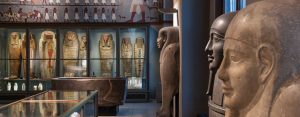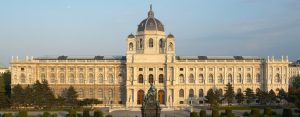
The Marie Skłodowska Curie Fellowship includes two research visits. My first research visit (12th-16th November 2018) was at the National Museum in Warsaw. The second research visit was at the Kunsthistorisches Museum in Vienna (KHM).
The Conservation Science Department of the KHM was founded in 1996 as a scientific department for the study and preservation of museum objects. The department investigates techniques and historic materials, alteration and corrosion processes using microscopic and spectrometric methods.
The KHM preserves wall paintings from a church in Nag’ el-Scheima/Sayala, just north of Abu Simbel on the east bank of the Nile. During the UNESCO Campaign to save the monuments of Egypt and Nubia in the 1960s, a team from the Österreichische Akademie der Wissenschaften under the direction of Prof. Manfred Bietak excavated a Christian settlement of and managed to save some of the wall paintings from so-called Church I. The church was dated to (probably) the 7th-8th century with the earliest paintings dated to the 8th century and later murals to the 11th century. The paintings are not on view but are kept in the new storage building of the KHM in Himberg, just outside Vienna.
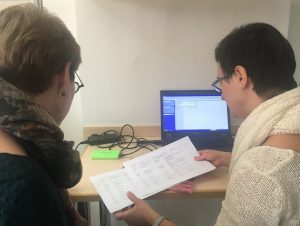 Dr. Katharina Uhlir specializes in X-ray fluorescence (XRF) spectrometry, a technique that uses x-rays to analyse chemical elements, in our case, in paint and plaster layers. The scanner emits x-rays that trigger energy from the elements present in the sample. Each element has a characteristic ‘signature’ and the chemical composition of a paint or plaster sample reveals the elemental composition that, in the case of paint, can lead to the identification of the pigments used. It is a non-destructive analytical technique, widely used in the analysis of paint and paint techniques in restoration and art-historical research. Paint and plaster fragments from the murals in Nag’ el-Scheima had previously been examined. Katharina took time to explain the results and point to several characteristic features in the paint compositions, for example the two different yellow paints used. When inspecting the paintings in the storeroom, these shades of yellow could be identified and it turned out that there was a difference in use. The lighter hue was only applied for highlighting features (faces, hands) of persons while the warmer yellow, in various shades, was used for all other garments, object etc., when required.
Dr. Katharina Uhlir specializes in X-ray fluorescence (XRF) spectrometry, a technique that uses x-rays to analyse chemical elements, in our case, in paint and plaster layers. The scanner emits x-rays that trigger energy from the elements present in the sample. Each element has a characteristic ‘signature’ and the chemical composition of a paint or plaster sample reveals the elemental composition that, in the case of paint, can lead to the identification of the pigments used. It is a non-destructive analytical technique, widely used in the analysis of paint and paint techniques in restoration and art-historical research. Paint and plaster fragments from the murals in Nag’ el-Scheima had previously been examined. Katharina took time to explain the results and point to several characteristic features in the paint compositions, for example the two different yellow paints used. When inspecting the paintings in the storeroom, these shades of yellow could be identified and it turned out that there was a difference in use. The lighter hue was only applied for highlighting features (faces, hands) of persons while the warmer yellow, in various shades, was used for all other garments, object etc., when required.
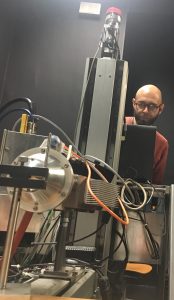
To experience the procedure of XRF investigation, Edoardo Tartaglia demonstrated the process, using samples he was working on at the time.
(see B. Wagner, O. Syta and G.Z. Zukowska, Spectroscopic investigations of the chemical composition of Nubian plasters, whitewashes and pigments, and K. Uhlir, M. Griesser, S. Stanek and B. Wagner, Scientific investigations of fragments of painted decoration from the church in Nag’ el-Scheima, in: D. Zielińska (ed.), Medieval Nubian Wall Paintings, Technique and Conservation, London 2019, p. 12 and p. 35-45).
Vanessa Novak, restorer of the Egyptian-Oriental Department, organized the visit to the storage facility in Himberg to study the paintings of Nag’ el-Scheima and to see the state-of-the-art storerooms. The Himberg storage was planned to replace a number of different storage facilities in Vienna. The whole storage collection is now under the same roof with vastly improved conditions while it can be managed in a more cost efficient way.
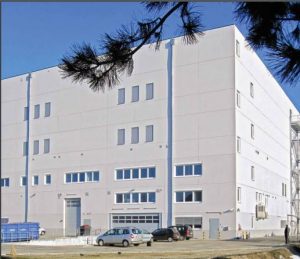
After S. Fleck, p. 12.
The modern building facilitates the conservation of the objects, but also in these optimal circumstances, common sense preventative principles are the most important measures: keep the environment safe, clean, stable, and avoiding pests.
In the case of these objects, we are dealing with wall paintings transferred to a new support. The paintings and support do not, or no longer, involve organic materials, which makes the objects less sensitive to pests. Light and humidity can have influence so covering the paintings and keeping them dry is essential.
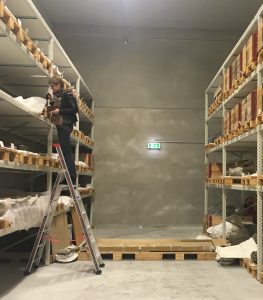
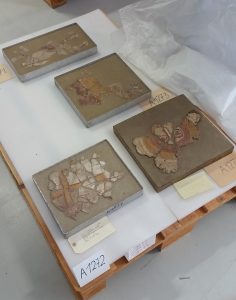
In Himberg, the paintings are covered with Japanese paper and packed in bubble wrap. The racks are heavy duty, well prepared for substantial loads. Lights are switched on only when needed, humidity is monitored and there is an integral pest management plan in place.
On our last day, we were able to see more of the archive of the Egyptian-Oriental department and the magnificent collections of the Kunsthistorisches Museum. Many thanks to Martina Griesser, Katharina Uhlir, Edoardo Tartaglia, Václav Pitthard, and Sabine Stanek of the Conservation Science Department, and at the Egyptian-Oriental Department, Regina Hölzl and Vanessa Novak. Es war eine wunderschöne Woche!
